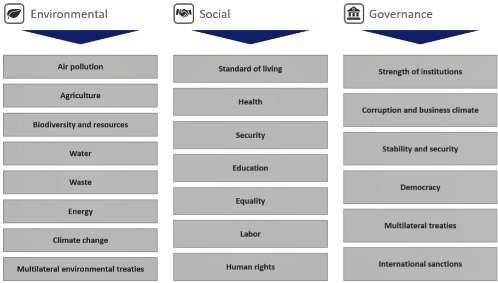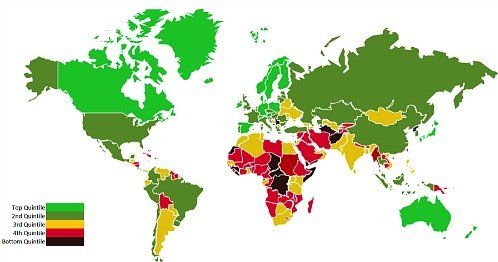Andreas Vetsch, Hedge Fund Analyst at LGT Capital Partners, explains a straightforward way to apply ESG criteria to determine the sustainability of government bonds and currencies.
By Andreas Vetsch, Hedge Funds Analyst at LGT
 Sustainability is becoming an important investment criterion for a growing number of equity fund managers. This is not least because a company's shortcomings in this area entail considerable risks for investors.
Sustainability is becoming an important investment criterion for a growing number of equity fund managers. This is not least because a company's shortcomings in this area entail considerable risks for investors.
But how can the sustainability quality of an investment in Swiss francs, the boliviano or Italian government bonds be assessed?
Many fund managers who invest in different asset classes face this challenge. At first glance, the answer is easy: for currencies and bonds, the underlying sustainability risk corresponds to the risk of the country to which the currency or bond is linked. This means assessing the country on the basis of environmental, social and governance (ESG) criteria.
No Universal Guidelines
In the area of «environment», factors such as coal consumption, nature reserves and freshwater consumption can be important at the country level. «Social» includes aspects such as unemployment, standard of living and murder rate, and «governance» can include criteria such as entrepreneurial freedom, political stability or patent applications.
Unfortunately, there are currently no universal guidelines for such analyses that fund managers can use as orientation.
Country Analyses Using the ESG Cockpit
That is why LGT decided in 2008 to develop its proprietary ESG Cockpit to assess securities and countries according to sustainability criteria. The government bonds in the LGT Sustainable Bond Fund Global, for example, are subject to an ESG rating that is directly incorporated into portfolio construction.
To this end, the underlying countries are examined according to a wide range of criteria. The data are based on publicly available information from the World Bank and various NGOs:
Countries with a poor ESG rating are penalized and those that violate certain criteria have no place at all in sustainable products. For example, Russia, which suffers from a high level of corruption and has signed neither the Convention on Cluster Munitions (CCM) nor the convention banning anti-personnel mines (APLC), should not be part of a sustainable portfolio.
Divergence Between Industrialized and Emerging Countries
For those who would like to see the stage of ESG development of individual countries for themselves, the below map by Bloomberg, which divides countries into five sustainability quintiles, provides a quick overview thereof. A look at the map shows that countries that are more economically developed generally have a higher ESG standard.
If a manager manages a global portfolio with allocations in industrialized and emerging countries and applies an ESG filter, there is therefore a risk of an overallocation of assets to industrialized countries.
(Source: Bloomberg)
To avoid this, it is important to compare industrialized and emerging countries separately. This is the only way to ensure a fair comparison of countries with different levels of development.
In this way, emerging countries are commensurately taken into account in the allocation and industrialized countries are penalized if they do not meet the established sustainability standards.
Switzerland on Top, Bolivia a Flop?
As the chart shows, Switzerland meets the highest ESG standards and is in the «Top Quintile». Very good ratings across all three dimensions are the reason for this. The country has an excellent track record, particularly in the areas «social» and «governance».
Italy, on the other hand, does not make it into the top group and scores disappointingly in an intra-European comparison. There is a need for action in all areas.
However, the situation is much worse in some emerging countries, for example Bolivia. The country only makes it into the fourth quintile and is a disappointment even among the emerging countries. Due to corruption, a poor legal system and a lack of entrepreneurial freedom, the country lags far behind comparable countries, especially in the area of «governance».
ESG Approaches Are Implementable
The question posed at the beginning of this article can therefore be answered as follows: if a diversified fund invests in the franc, this is positive from the point of view of sustainability. Switzerland meets the highest ESG standards.
An investment in the boliviano is quite a different matter. In terms of sustainability, Bolivia is lagging behind both globally and in comparison with other emerging countries.
Italy is keeping up at the global level, but lags behind many industrialized countries. A fund manager can take this information into account during portfolio construction, which means that an ESG approach can also be applied to portfolios that invest in currencies or bonds.
Andreas Vetsch is a hedge fund analyst at LGT. His area of expertise is trading strategies. Before joining LGT in 2012, he studied at the University of St. Gallen, where he received a master’s in banking and finance and a second degree in business journalism.














